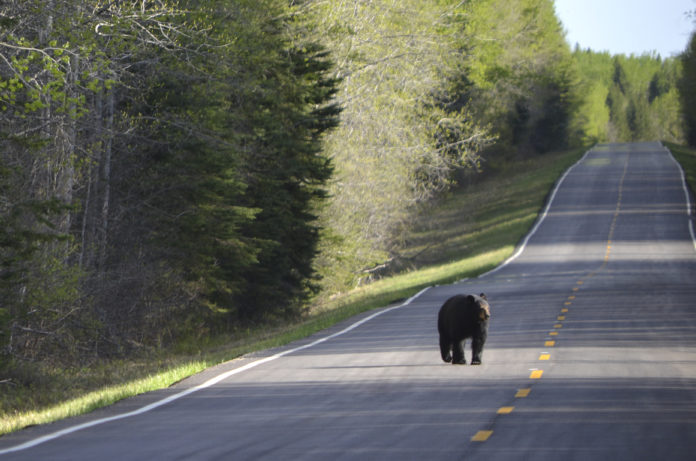The Saskatchewan Wildlife Federation (SWF) and SGI are teaming up to remind drivers to watch out for wildlife alongside the road.
The SWF is expecting an increase in wild deer populations, meaning a greater risk for collisions with wildlife.
It’s why they’re lancing the 23rd annual Give Wildlife a Brake public safety campaign, which uses billboards, social media and radio to remind motorists of the dangers of wild animals crossing the roads in front of them. The campaign runs from mid-June into July and then again in Early October to late November, the two times of year the SWF says the risk of wildlife collisions is highest.
“There are certain times of the year where you may be more likely to encounter animals when you’re driving — the springtime when they’re active and the late fall and early winter when they’re migrating and mating,” said SGI spokesperson Tyler McMurchy.
“It’s always important when you’re driving to remain alert, but especially when you’re entering an area where wildlife may be prominent.”
He said that given the province’s geography and size, those encounters may be inevitable, but that in areas where it’s more likely to encounter wildlife are typically marked with yellow wildlife warning signs.
In 2018, SGI saw 12,401 claims for collisions with deer, 525 for moose and 1,649 for other wildlife. It also saw 1,351 claims related to collisions with birds.
Monday, the same day SWF and SGI sent out their joint press release, Parkland Ambulance responded to a vehicle vs. wildlife collision on Highway 11 about 10 km south of the city. A 55-year-old woman was injured and taken to the hospital in good and stable condition.
“We want to remind people, especially if they’re travelling late at night or early in the morning when wildlife is more likely to be moving around that they keep their eyes on the road and be observant,” said Parkland Ambulance director of public affairs Lyle Karasiuk.
“It doesn’t have to be in a bush or treed area. I’ve seen wildlife running along the bare, open prairie.”
Karasiuk said during a recent drive from Prince Albert to Saskatoon he saw about half a dozen deer alongside Highway 11 in the early morning.
“If we can do our best to watch for them and take steps to avoid them, were less likely to kill the wildlife or be involved in a vehicle incident like the one that happened (this week), which resulted in some injuries to the driver.”
McMurchy offered similar advice, adding that if you see wildlife by the roadside you should reduce your speed to give you more opportunity to react, reduce stopping distance and reduce the force of impact from a potential collision.
He acknowledged, though, that sometimes collisions are unavoidable.
“Even if people take every precaution and remain alert at the wheel, sometimes a deer or another animal will just jump out in front of you,” he said.
“We recommend that people aim their vehicle at the spot the animal came from, not where it’s going, and if they can, try for a glancing blow rather than a head-on collision.”
He also recommended that drivers let up on the brake just before impact so that the front end of their car raises up a little bit.
“It can reduce the chance of the animal going through your windshield, which could lead to injuries, and in a handful of occasions every year, unfortunately, a fatality.”
For more tips about what to do if you encounter wildlife while you’re driving, visit https://www.sgi.sk.ca/wildlife-collisions


